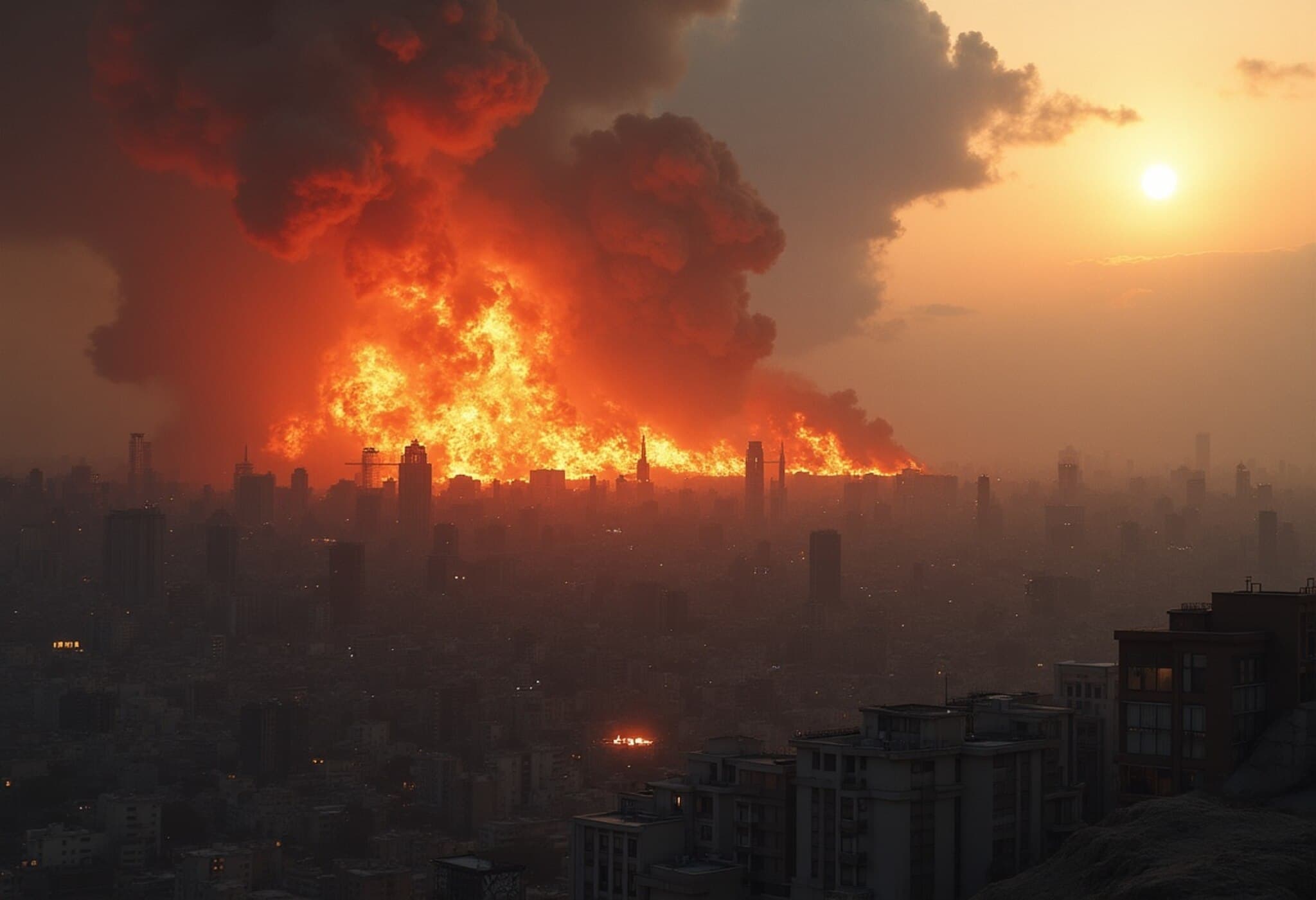Trump Equates Airstrikes on Iran to Hiroshima and Nagasaki Bombings
At the NATO Summit in the Netherlands, former President Donald Trump doubled down on his claims that recent U.S. airstrikes have dealt a crippling blow to Iran’s nuclear ambitions. Describing the strikes as causing "total obliteration" of Iran’s key nuclear sites, Trump asserted that Tehran's nuclear weapons program has been pushed back by decades.
A Bold Comparison to World War II
Trump drew a controversial parallel between the airstrikes on June 22 and the historic atomic bombings of Hiroshima and Nagasaki, stating, "That ended the war. I don’t want to use the example of Hiroshima, I don’t want to use the example of Nagasaki—but that was essentially the same thing." He argued that Iran will not be able to develop nuclear weapons for a long time to come.
Disputes Over Damage to Iran’s Nuclear Program
Despite Trump’s confident declarations, reports have emerged casting doubt on the complete destruction of Iran's nuclear infrastructure. A Pentagon Defence Intelligence Agency review suggested that while certain sites suffered damage, others remain operational or well-protected, including key equipment like centrifuges and uranium stockpiles.
Responding to these reports, White House Press Secretary Karoline Leavitt dismissed the assessment as "flat-out wrong," emphasizing the impact of deploying fourteen 30,000-pound bombs directly on target to achieve "total obliteration."
Trump’s Reaction to Media Coverage
Trump criticized major news outlets for labeling his claims as inaccurate, branding their stories as "fake news." He specifically targeted reports that suggested Iran’s nuclear capabilities remain largely intact, reiterating on his social media platform that the nuclear sites were "completely destroyed."
U.S. Officials Outline What Was Achieved
Vice President JD Vance reinforced the administration’s stance, explaining that while Iran still retains approximately 408.6 kilograms of uranium enriched to 60% purity, it has lost the capacity to enrich further to weapons-grade levels or assemble a nuclear warhead. He termed the operation a "mission success."
According to international experts, about 42 kilograms of 60% enriched uranium can produce enough material for one nuclear bomb. The U.S. believes destroying the infrastructure necessary for final enrichment and weaponization effectively neutralizes Iran’s immediate nuclear threat.
Iran’s Preparations to Shield Nuclear Assets
Prior to the airstrikes, Iran reportedly took measures to protect its nuclear facilities. Following Israel’s campaign against Tehran, Iranian officials informed international inspectors about "special measures" to safeguard critical equipment.
Satellite imagery revealed activity at the Fordo nuclear site days before the attack, including trucks and bulldozers moving earth to seal underground tunnels, likely protecting sensitive stockpiles. Analysts suggest that Iran may have relocated enriched uranium or valuable centrifuges to prevent their destruction.
Long-Term Nuclear Threat Remains
Despite notable setbacks, experts warn that Iran’s long-term nuclear program is not eradicated. Over recent years, Tehran has produced advanced centrifuges beyond international monitoring, and has announced new enrichment plants whose current status is uncertain.
Specialists contend that Iran retains a foundation strong enough to rebuild its nuclear capacity, possibly through hidden, smaller enrichment facilities. This could allow Tehran to resume weapons-grade enrichment more quickly than previously anticipated.
While the recent strikes have slowed Iran’s progress, they have not permanently eliminated the threat posed by its nuclear ambitions.

